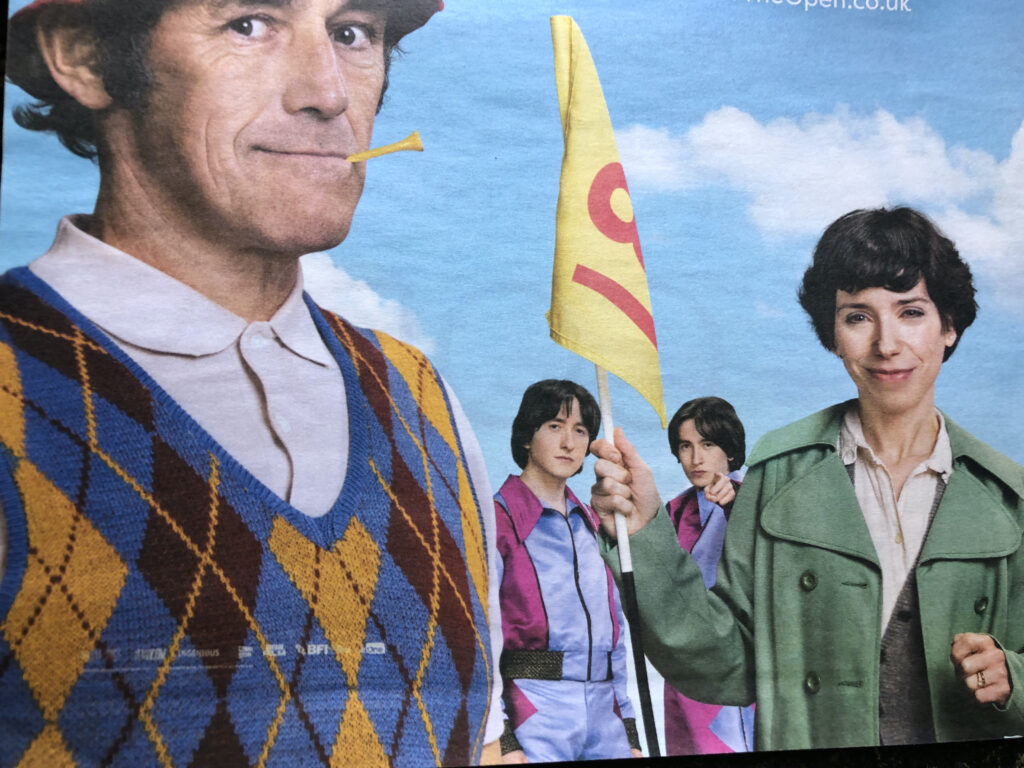The Phantom of the Open – I can see the wordplay they’re going for but I think somehow it doesn’t quite work – tells the story of Maurice Flitcroft (played by Mark Rylance), a 46-year-old shipyard crane operator from Barrow-in-Furness who is inspired by seeing a golf tournament on the television to take up the game and enter the qualifying competition for the 1976 Open Championship. On the entry form he describes himself as a professional after his wife, Jean (Sally Hawkins), points out it’s more straightforward to do it that way.
Although his efforts to get on to an actual golf course in order to practise are invariably thwarted (in its portrayal of the game in general, the film reflects the horrible snobbery and pettiness that used to typify what many UK golf clubs used to be like), Flitcroft feels his game is improving. One evening he tells Jean that she should have seen him hitting balls on the beach earlier that day. “I’m a whisker away,” he tells her. I have to believe the producers have watched Caddyshack (see photo on the home page); the moment is so evocative of Bill Murray deadheading those flowers while dreaming of his “Cinderella story” at the Masters.

Eventually the big day arrives. One of his son’s is his caddie. After his opening shot, his father asks how far he has to go to get to the green. He’s told that since the hole measures 460 yards, “we’ve got 452 left”. It goes without saying that the idea the BBC might ever have broadcast the qualifying rounds for the Open is simply bonkers but we don’t let that sort of detail spoil our entertainment. After Flitcroft has completed his round in 121, a reporter doorsteps Jean at their home. He enquires as to her reaction to the fact that her husband has just shot the highest round in Open history. Jean looks shocked. “Does that mean he’s won?” she replies. “No,” she is told. “High-scoring is bad.” One could not blame her, though; in most sports, high numbers are a good thing.
Under the alias of Gerald Hoppy, a supposed Swiss professional with a name based on that of his boss at the shipyard, Flitcroft had another go, to similar effect, in 1983. It is of no relevance other than coincidence that both those Opens for which Flitcroft attempted to qualify were held at Royal Birkdale. That had also been the case in 1965 when an American by the name of Walter Danecki entered the Open qualifying competition, also as a professional even though he was nothing of the sort. Unlike Flitcroft, however, he got to play both rounds, shooting 108-113 to miss out on qualifying by a whopping 70 strokes.
There is one additional touch of humour: Flitcroft has a conversation in the locker room with a young Spanish golfer – Seve Ballesteros. The 1976 Open at Birkdale was indeed the occasion when Seve extravagantly launched himself into the perception of the British public, but he would never have met Flitcroft in those circumstances: as the winner of the Continental Order of Merit, he was exempt from qualifying. I think it should also be said that I doubt Seve would have found any humour at being paired with a guy who was shooting 121. But that is a very different take on the subject, one which I think the movie-makers here were entitled to avoid.
